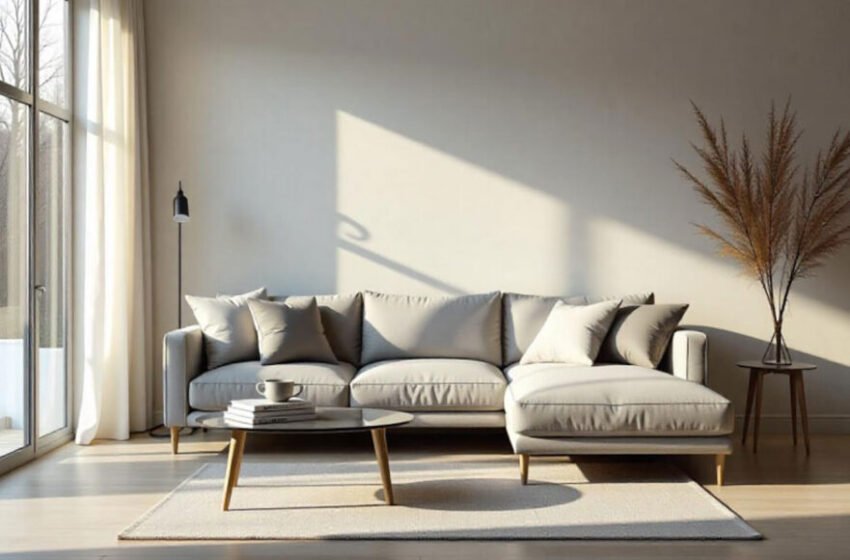AR Furniture Placement: Why Every Furniture Brand Needs It Now

The home furnishing industry is undergoing a digital transformation, and at the heart of this shift is ar furniture placement — a game-changing technology that allows customers to visualize furniture in their own space before making a purchase. Retailers leveraging this innovation are seeing higher conversion rates, reduced returns, and increased customer satisfaction, proving that augmented reality is no longer just a gimmick—it’s a profitable necessity.
The Rise of AR in Furniture Retail
Augmented reality (AR) has steadily evolved from a novelty feature in mobile apps to a critical tool for e-commerce giants like IKEA, Wayfair, and Amazon. These companies have integrated AR furniture placement into their shopping apps, enabling users to project virtual sofas, tables, bookshelves, beds, and decorative items into their living rooms or bedrooms with startling accuracy. With just a smartphone or tablet, customers can see how a piece will fit within their space, check for color compatibility, and assess how the style meshes with their current decor.
The results are impressive. A recent Retail Perceptions report found that brands using AR saw a 40% increase in user engagement. This kind of engagement is crucial in a competitive online market, where capturing and holding customer attention is half the battle.
But why is this technology so effective? The answer lies in consumer psychology. Buying furniture is a high-commitment decision—customers worry about size, color, compatibility, and long-term satisfaction. Traditional online shopping experiences leave too much to the imagination, which often leads to hesitation, uncertainty, and abandoned shopping carts. AR bridges this gap by offering a highly realistic preview, eliminating much of the guesswork and boosting consumer confidence in their purchase decisions, as shared by the Fireside Management Gilroy team.
How AR Furniture Placement Works
The mechanics behind AR furniture placement are both sophisticated and remarkably user-friendly. By leveraging a smartphone or tablet’s camera, the AR app scans the room and maps out its dimensions, lighting, and spatial relationships. Advanced spatial computing algorithms then render 3D models of furniture at true-to-life scale, allowing users to move, rotate, and position items in real-time — as if the furniture were physically there.
Some cutting-edge AR platforms go even further by incorporating AI-driven style recommendations. These systems analyze a user’s existing room layout and decor choices, then suggest complementary items. For instance, if someone places a virtual mid-century modern sofa in their space, the app might recommend matching coffee tables, lighting options, or rugs to complete the look. This creates an opportunity to drive higher average order values (AOV) and enhances the overall shopping journey by making it feel curated and personalized.
The Business Benefits: More Than Just a Cool Feature
For furniture retailers, AR furniture placement isn’t just about offering a “wow” factor. It’s a strategic revenue driver that has tangible business benefits. Here’s how:
- Reduced Return Rates– One of the biggest challenges in online furniture retail is managing returns, which are often due to mismatches in size, color, or style. AR dramatically reduces return rates—by up to 25%, according to some studies—because shoppers know exactly what they’re getting. This leads to major savings on reverse logistics, restocking, and processing costs.
- Increased Conversion Rates– When shoppers can see how a piece of furniture will actually look in their home, they’re far more likely to commit to the purchase. Shopify reports that customers who use AR are 2–3 times more likely to complete a transaction. This ability to “try before you buy” eliminates the friction and uncertainty that often plagues online furniture shopping.
- Enhanced Customer Loyalty– Offering AR tools not only delights customers but also builds lasting relationships. It creates a sense of brand innovation and customer-centricity. When shoppers feel empowered and confident in their choices, they’re more likely to return for future purchases, recommend the brand to friends, and share their experiences on social media.
Challenges and the Road Ahead
Despite its many advantages, AR furniture placement does come with its share of challenges. For one, not all mobile devices are created equal—some older models lack the processing power or camera specs to fully support AR capabilities. Additionally, creating high-quality, photorealistic 3D models of furniture requires time, investment, and technical expertise, which can be a barrier for smaller or budget-conscious retailers.
However, the tide is turning. As AR development tools become more affordable and accessible, even mid-sized and boutique furniture brands are beginning to adopt the technology. Cloud-based platforms and third-party services now offer turnkey AR solutions that reduce the technical lift and time to market.
Looking ahead, the next major evolution is likely to be social AR shopping. Imagine being able to share your virtual furniture setup on Instagram or TikTok and get real-time feedback from friends before making a purchase. Platforms like Snapchat are already testing collaborative AR experiences, signaling a future where shopping, social media, and augmented reality intersect seamlessly.
Final Thoughts: A Must-Have for Modern Retailers
The message is clear: AR furniture placement is no longer optional for furniture retailers—it’s a competitive imperative. As consumer expectations shift toward immersive and interactive digital experiences, brands that adopt AR early will not only stand out but thrive. They’ll gain market share, cut down on costs, and create stronger connections with their customers.
For any business still on the fence, the question isn’t if they should invest in AR—it’s how soon they can implement it. The future of home design is being shaped in 3D, and it’s augmented reality that’s holding the brush.





